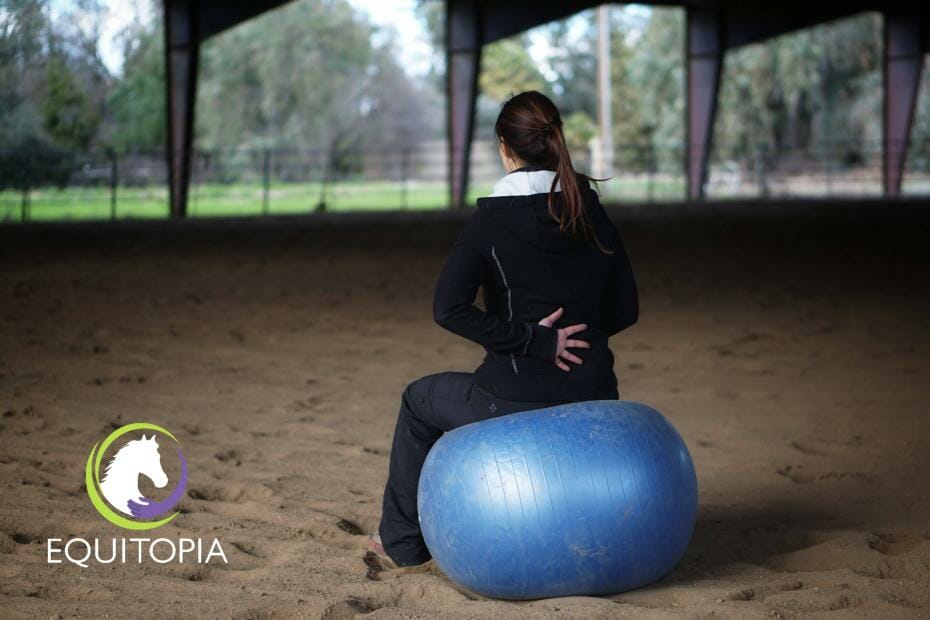Getting to the core of better riding

Understanding core strength and core stability for good riding
Core strength is a current buzzword in fitness and riding. People talk about core strength as if that’s the key to good riding. A lot of riders believe a 6-pack is their ticket to finding true balance in the saddle. Unfortunately, things are not so simple.
Yes, core muscles are important, but there is a big difference between core strength and core stability. Endless repetitions of exercises to improve your core strength and the effort to keep your core muscles active all the time is not only unproductive, but can actually be harmful. I have seen “strengthening the core” result in loss of function, back pain, decreased hip mobility and severe hip pain.
Good riders use muscles in a dynamic way
That said, a degree of core strength is absolutely necessary to be able to have control over your body while moving with your horse. But just because you are able to hold your muscles in constant contraction, it doesn’t mean you should do that while you are riding.
Riding is a dynamic process so you should be able to use your muscles in a dynamic way. Efficient movement requires that muscles contract, de-contract and semi-contract at the right time in the right amount to produce a coordinated smooth and fluid motion. The appropriate muscles need to fire and stop firing unconsciously to be supple and strong. This is critical for good riding.
Young children are able to ride and have lovely posture on horseback. So why do we think that we need 6-pack abs to have spinal stability? Overdevelopment or intentional contraction of rectus abdominis (the 6-pack muscle) by holding your belly button in is unnecessary for good posture.
Contraction of this muscle restricts breathing and restricts the pelvis and hips, which are so important for good riding. We recognize that we don’t want the horse to brace so why ride bracing the abdominal muscles? Yes there is a time to use them but not all the time!
Feel the difference!
To feel how intentionally contracting the abdominal muscles affects overall function, do the following.
- Begin by noticing your breathing, the quantity, and ease and where your body is moving as you breathe and then tighten your core – what happens? Notice how shallow your breathing becomes. Feel how the lower ribs are restricted. Let your belly go soft. How deep can you breathe now?
- Contract your core muscles and feel what happens in your waist area between your rib cage and your pelvis. Bend to the side and notice how much effort it takes. Let your abdomen relax and side bend again. How is it now? When you let the appropriate muscles do the job you can do more with less effort.
- Stand up and pull your belly button toward your spine. Slowly lift one knee toward your chest while keeping your abdomen pulled in. How easy is it to lift your knee? Let your belly go soft and repeat lifting the leg. How easy is it now? Feel how holding your core limits the movement in your hip joints, pelvis and restricts the amount you can lift your leg easily. I am sure if you wanted you could pull your leg up with your core tight but how much more effort is that?
Good riding requires your pelvis to move with your horse. Your spine needs to be able to move so that you can absorb the horse’s back motion. Maintaining an alignment required to hold a plank is not going to absorb motion since the pelvis and lower back are no longer pliable enough to follow the motion.
Instead of striving toward greater core strength, strive for core stability, which includes diversity, variety and uses the entire body – this is what we need to focus on if we truly want to become better riders. Take up activities that require functional overall movements such as dance, swimming or walking or Feldenkrais Awareness Through Movement lessons and always remember to enjoy the ride!